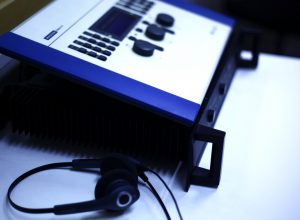Hearing Loss

Did you know that according to statistics compiled by Johns Hopkins Medicine:
– About 20% of Americans, 48 million, report some degree of hearing loss.
– At age 65, one out of three people has hearing loss.

Hearing loss is a major public health issue in the USA. It is the third most common physical condition after arthritis and heart disease.
Your hearing health has a direct effect on your general health.
Those with untreated hearing loss experience a 30-40% greater decline in thinking abilities to those without hearing loss.
Untreated hearing loss can lead to depression through the reduced quality of life experienced by sufferers.
What is hearing loss?
Hearing loss is a sudden or gradual decrease in how well you can hear.
Degrees of hearing loss are described as mild, moderate, severe or profound.
In adults, the most common causes of hearing loss are noise and aging.
Noise-induced hearing is commonly the result of working in a noisy work environment. Deterioration in hearing can occur over a period of many years.
Age-related hearing loss is often caused by changes in the inner ear that cause a slow but steady hearing loss.
How do you know you may be suffering from hearing loss?
Some simple signs may indicate that you are experiencing hearing loss.
Sounds may seem loud enough, but may not be clear. Or, quiet sounds cannot be heard as well as before.
People may seem to be mumbling or talking too quickly. You may find that facing the speaker helps you to hear better. Or you may find yourself turning your head to favor one ear over the other.
Group conversations are more and more difficult to follow. Hearing clearly is made more challenging when there is any background noise.
Any of these signs will show that you are suffering from some level of hearing loss.
Noise induced hearing loss (NIHL)
One of the most common forms of noise-induced hearing loss is as a result of working in a noisy environment.
25% of individuals with hearing loss have incurred this injury in the workplace.
If the background noise where you work means you have to raise your voice to be heard in a conversation, this noise is at a level that could damage your hearing.
According to The National Institute for Occupational Safety and Health:
– As many as four million workers go to work each day in damaging noise.
– Ten million people in the U.S. have a noise-related hearing loss.
– Twenty-two million workers are exposed to potentially damaging noise each year.
There is a range of occupations that can lead to NIHL. Commonly, we think of airport, factory or construction workers. But there are other less expected ones such as dentists, first responders, and even physical education instructors.
If you work with industrial machinery, or in a workplace where there is a constant high level of noise, there is a greater likelihood you will suffer from NIHL.
What should you do if you think you suffer from hearing loss?
The earlier you detect a hearing loss, the better the chance you have of effectively treating this condition.
A hearing test will help define how effective your hearing is.
How does a hearing test work?

*(An audiogram is a graph which gives a detailed description of your hearing ability and which can be described as a picture of your sense of hearing.)*
The audiogram charts hearing ability, specifically, the softest sounds that can be heard in ears at various low-to-high frequencies. These sounds are called thresholds.
Technically, a person’s hearing threshold is defined as “the softest sounds a person hears at each frequency approximately 50% of the time.”
The graph shows frequency, from low to high, across the bottom or horizontal axis and intensity, from soft to loud, down the side or vertical axis.)*
If your hearing is impaired, you will need to hear sounds at greater volume at differing frequencies.
These are valued in adults as follows:
Normal hearing is hearing sounds at 0-25dBs at all frequencies
Mild hearing loss is hearing sounds at 20-40dBs at certain frequencies. Unable to hear soft sounds. Can hear a normal conversation in a quiet room but has difficulty in a noisy environment. Cannot hear whispered conversation or speech from a distance.
Moderate hearing loss is hearing sounds at 40-70 dBs at certain frequencies. Has difficulty hearing a normal conversation in a quiet room. Must lip-read or use amplification to understand most words.
Severe hearing loss is hearing sounds at 70-90 dBs at certain frequencies. Cannot hear a conversation unless the speaker speaks loudly near the ear.
Profound hearing loss is hearing sounds at 70-90 dBs at certain frequencies. Cannot understand speech even if the speaker shouts.
How can Hear Now help You?
Hear Now are specialists in treatment for noise induced hearing loss and tinnitus. We can help diagnose hearing conditions through a simple test, propose solutions and provide ongoing support.
We believe achieving improved hearing takes more than technology – it’s a partnership.
If we cannot help you, we will tell you or suggest where you might get further help.





